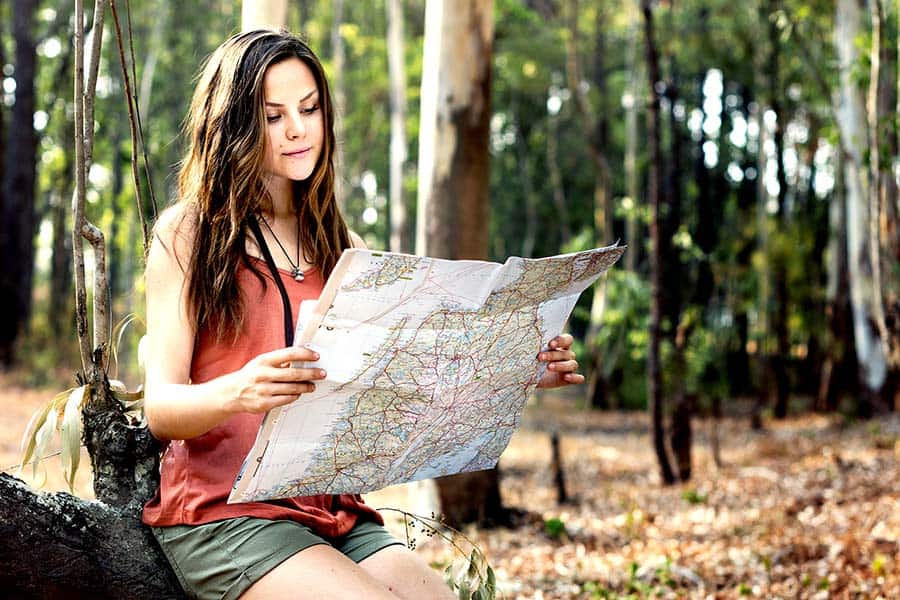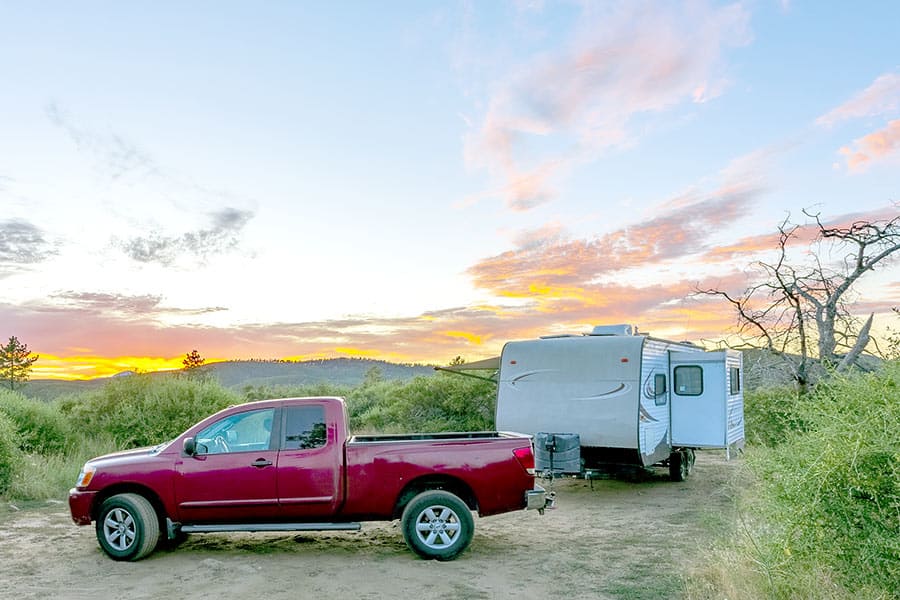
Boondocking, also called dispersed or dry camping, is a popular camping style that involves camping in remote locations without the amenities of traditional campgrounds, such as access to water, electricity, and bathrooms.
While the lack of amenities can be seen as an advantage by some, it also means that campers must take extra precautions to ensure their safety. This post will discuss some precautions and procedures for staying safe while boondocking.
How to Stay Safe While Boondocking
A camping trip can be a great way to enjoy the outdoors and make unforgettable memories, but boondocking is a little bit different than pulling into the campground and setting up camp. So to help make your trip safe, here are a few suggestions to remember.
1. Plan Ahead
When boondocking, it’s important to research routes and potential campsites in advance. Researching the area before setting out will help if you encounter something unexpected upon arrival—also, a good rule of thumb is to have several backup plans.
2. Prepare Your Vehicle
Inspect your vehicle before leaving; make sure tires, brakes, and other systems are in good condition. If needed, make any necessary repairs. Additionally, verify that you packed all the essential camping gear.
Boondocking often involves traveling over unpaved roads. Be sure your vehicle is suitable for off-roading or traveling on rough and rutty roads, and above all, use common sense in terms of what roads to take.

3. Bring Enough Supplies
Prepare for being off-grid by bringing enough water, food, and supplies to last for the duration of your trip.
Have enough water for drinking, cooking, and cleaning—at least one gallon of water per day or more per person. It’s also wise to bring a water filtration system or purification tablets to refill your containers with lake or stream water if necessary.
When packing food, bring enough for the duration of your trip plus some extra in case of emergencies.
4. Fill Propane Tanks
Before leaving for an off-grid excursion, check and fill your propane tanks to ensure that you have enough propane for the duration of your trip.
5. Let Someone Know Where You’re Going
We expect everything to go as planned when boondocking, but sometimes that isn’t the case. Unforeseen events can occur, and an emergency could develop.
So prior to leaving, tell your family or friends your route and when you plan to return. This way, if something goes wrong, help will be able to find you quickly.

6. Bring Navigational Aids
Know where you are. In addition to any GPS devices, carry a paper map, a topographical map, and a compass. If your vehicle becomes disabled, you can still navigate on foot. The last thing you want is to get lost.
7. Arrive Before Dark
Reaching your destination early allows you to get familiar with the area, locate the best camping spot, check for other campers, look for anything odd or out of place which could indicate a problem, and secure the campsite by nightfall.
8. Add Some Security Features
Use battery-operated motion-sensing lights, cameras, alarms, or other security equipment to alert you when people or animals are around.
9. Choose Your Campsite Carefully
Be sure the site is suitable for camping and free from any potential hazards, such as dead limbs hanging overhead, as these could fall anytime; low lying areas that may be prone to flooding, an extremely dry area that could be a fire danger, unstable terrain, etc.

10. Look For Possible Risks
Camping near cliffs may be tempting due to their incredible views, but they pose a fall risk to both people and pets. In addition, watch for potential rockslide areas, swampy spots, mud flats, sinkholes, etc.
11. Boondocking Red Flags
Whatever you want to call it, intuition, instinct, or a hunch, it’s important to trust your gut. If a situation or place feels wrong or unsafe or something gives you a bad feeling, don’t question it; execute your backup plan and move on.
12. Be Ready To Go
Always park so you are prepared to leave quickly if needed. Pack up all outside items when camping in an RV before settling in for the night, and park facing the exit point. Have your keys handy.
13. Fill Your Fuel Tank
Before going too far off the beaten path, fill your vehicle’s fuel tank. You don’t want to run out of fuel miles from the nearest filling station.

14. Keep Weather Alert
Stay updated on the weather, as you may be camping in a remote area without much shelter. Monitor the weather forecasts and make sure you are prepared for any sudden changes.
15. Store Your Food And Garbage Securely
Don’t leave trash or food scraps around the campsite. It could attract unwanted nuisance animals. Also, be aware of the wildlife around your campsite – some animals may be more aggressive than others.
16. Bear Spray And Pepper Spray
Carrying bear spray on a camping trip can be a great way to stay safe in bear country. It’s an effective deterrent against bears and other large animals. Additionally, for protection against human attackers, carry pepper spray. It’s non-lethal and can be used to ward off potential threats.
17. Respect Laws And Regulations
Boondocking is often done on public land, be mindful of any laws, regulations, or restrictions while visiting a location. Check with the local authorities or park rangers for the latest camping information.
Other Posts of Interest
- What Do I Need To Pitch A Tent?
- Do Tents Often Get Stolen at Campsites?
- Are There Mountain Lions On The Pacific Crest Trail? +Safety Tips
- Review: Are Quick-Dry Travel Towels Any Good?
18. Keep A Low Profile
Remember, the whole purpose of your trip is to get away from crowds and enjoy nature’s solitude, so respect nature’s serenity by keeping a low profile.
19. Be Prepared For Emergencies
Pack a first-aid kit and bring a charged cell phone or satellite phone. In an emergency, know the location of the nearest medical facility or hospital and how to contact emergency services if needed.

20. Secure Valuables
Never leave valuables exposed in plain sight when you are away from your vehicle. Doing so might encourage potential thieves to break in. Instead, hide your valuables, so they are not visible from the outside.
21. Don’t Post On Social Media
Forget social media until you return home. Avoid taking a selfie and posting it on social media, telling the whole world you’re camping out someplace miles from anyone.
22. Follow Fire Safety Guidelines
Like all forms of camping, this sometimes involves campfires, so you should always be aware of fire restrictions in the area. Make sure that your campfire is safely contained, and remember to extinguish it when finished. Never leave a campfire unattended.
23. Leave No Trace
One of the most critical aspects of boondocking is the commitment to leave no trace. This obligation means following practices such as disposing of waste and garbage in appropriate places, respecting wildlife and their habitat, and leaving your camping area in as good or better condition as you found it.
Following these principles allows everyone to enjoy the outdoors while preserving the environment for future generations. To learn more, visit the Leave No Trace website.
Surviving in the Wild
In conclusion, boondocking can be a gratifying experience for adventurers looking to explore new places on their own terms. It may require some creativity, but the rewards of being able to explore natural areas can make it all worthwhile. Whether you’re an experienced camper or just starting, the opportunity for this type of camping is one that should not be overlooked.





